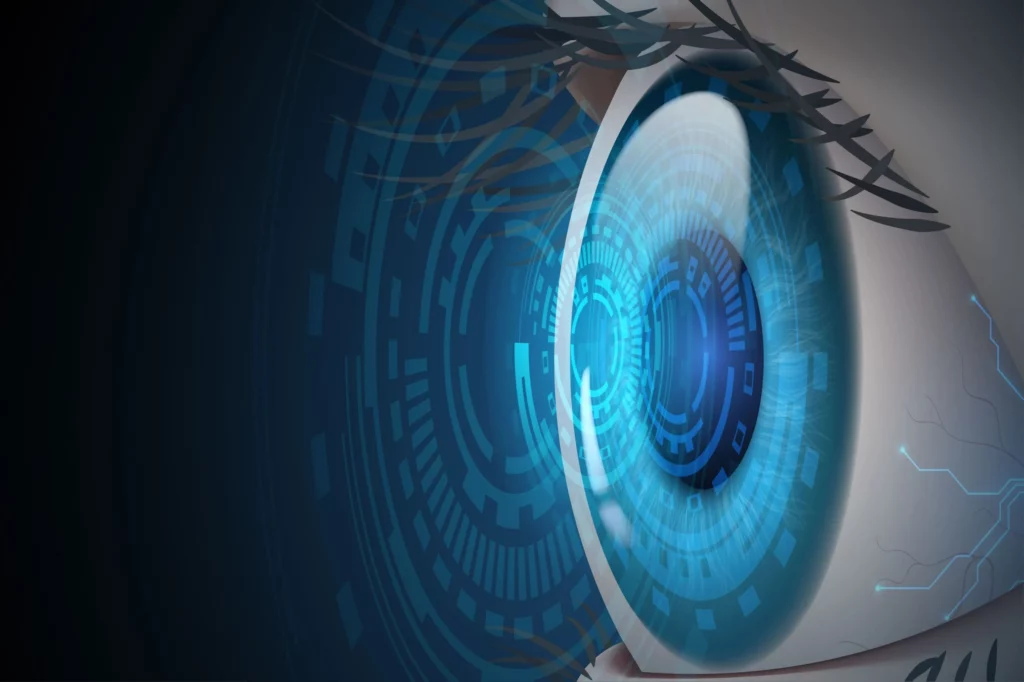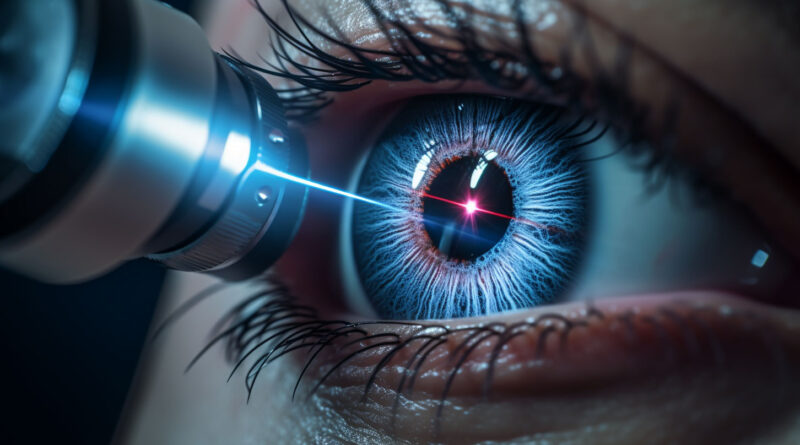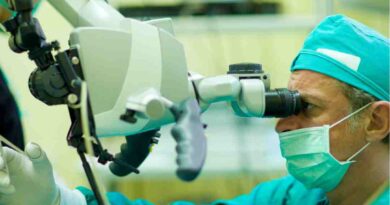The Future of Vision Correction: Advances in Eye Surgery
Vision correction has come a long way from the days of wearing thick glasses or enduring painful procedures. Today, we’re witnessing groundbreaking advancements that promise to redefine the way we approach eye care. With technology continually evolving, the methods used to correct vision are becoming more sophisticated, efficient, and accessible. In this article, we will explore the current landscape of vision correction, focusing particularly on innovations in eye surgery that are shaping its future.
Understanding Vision Correction Needs
To properly appreciate the advances in eye surgery, it’s essential to first understand the vision correction needs that many individuals face. Millions of people worldwide struggle with refractive errors such as nearsightedness, farsightedness, and astigmatism. These conditions are typically corrected through glasses, contact lenses, or surgical procedures.
One of the most promising developments in eye surgery is the integration of artificial intelligence (AI). AI can enhance pre-surgical evaluations and personalize treatment plans based on an individual’s unique eye anatomy and visual needs. By analyzing vast amounts of data, AI can help surgeons make more informed decisions, leading to better outcomes for patients.
As we delve deeper into the future of vision correction, it’s important to recognize the demographic trends influencing patient needs. For example, the global population is aging, leading to a rise in eye conditions, including presbyopia – the gradual loss of the eye’s ability to focus on nearby objects. This shift creates a greater demand for more effective and long-lasting vision correction solutions. Additionally, lifestyle factors such as increased screen time and digital device usage have contributed to a surge in vision problems, particularly among younger generations. As more individuals experience digital eye strain, the need for innovative solutions that address both traditional and modern vision challenges becomes increasingly critical.

Traditional Options: Glasses and Contact Lenses
Historically, eyeglasses and contact lenses have been the primary means of vision correction. Although they are effective for many, they come with certain drawbacks. Glasses can be cumbersome, and some individuals find it uncomfortable or inconvenient to wear contacts daily. Additionally, many people lead active lifestyles where glasses can pose a challenge. The fashion aspect of eyewear also plays a significant role; while some embrace the style of glasses, others may feel self-conscious or limited by their frames. Furthermore, the maintenance and cost associated with contact lenses, including cleaning solutions and regular replacements, can add to the burden for those who rely on them.
As a result, an increasing number of patients are seeking surgical options to permanently correct their vision. The desire for convenience and improved quality of life is prompting many to consider alternatives to traditional methods. Moreover, advancements in technology have made these surgical options more accessible and appealing, with many clinics offering financing plans and consultations that help demystify the process. This shift towards surgical solutions reflects a broader trend in healthcare, where patients are increasingly prioritizing long-term solutions over temporary fixes.
The Rise of Laser Surgery
Among the most notable advancements in eye surgery is the advent of laser procedures such as LASIK (Laser-Assisted in Situ Keratomileusis). LASIK utilizes precise lasers to reshape the cornea, allowing light to better focus on the retina. With its quick recovery time and effectiveness, LASIK has become a go-to option for many patients seeking a permanent solution. The procedure typically takes less than 30 minutes, and most patients experience improved vision almost immediately, which is a significant draw for those considering surgery.
However, further advancements continue to emerge, enhancing both safety and efficacy. Newer techniques such as SMILE (Small Incision Lenticule Extraction) minimize corneal damage, offering an alternative that can achieve comparable outcomes to traditional LASIK with fewer complications. Additionally, the introduction of wavefront technology has allowed for personalized treatment plans that cater to the unique optical characteristics of each patient’s eyes, further improving the precision of the surgery. As these innovative procedures gain traction, they are reshaping the landscape of vision correction, making it more tailored and effective than ever before.
The Future of Eye Surgery Technologies
As we look ahead, exciting technological innovations are on the horizon for vision correction. Research and development are paving the way for new surgical techniques that hold the potential to change how we approach eye care.

Artificial Intelligence in Eye Surgery
Moreover, AI-driven systems are being developed to improve surgical precision. By augmenting the surgeon’s capabilities with real-time analytics, these technologies can help mitigate human error and improve the overall patient experience. For instance, AI algorithms can predict potential complications during surgery by analyzing patient history and intraoperative data, allowing for proactive measures to be taken. This not only increases the safety of the procedures but also instills greater confidence in patients who may be apprehensive about undergoing eye surgery. Read more about AI on http://jmc.stanford.edu/artificial-intelligence/what-is-ai/
Advancements in Lens Technology
Another exciting area of development is in lens technology. Intraocular lenses (IOLs), used in cataract surgery, have seen significant advancements, providing patients with options that can address multiple vision problems simultaneously. Multifocal and accommodating lenses can significantly reduce dependency on glasses after surgery, making vision correction even more efficient.
Future innovations in lens technology may include smart lenses that can adapt to different lighting conditions or even focus automatically. These advancements could revolutionize how individuals experience their surroundings, greatly enhancing quality of life. Imagine a lens that not only adjusts to bright sunlight but also enhances contrast in low-light environments, allowing for clearer vision during evening activities. Additionally, researchers are exploring the potential of lenses embedded with sensors that could monitor eye health in real time, providing valuable data to both patients and healthcare providers. This could lead to earlier detection of conditions such as glaucoma or macular degeneration, ultimately contributing to more effective management of eye health.
Personalized Medicine in Eye Care
As personalized medicine gains traction across various medical fields, eye care is poised to benefit significantly. The concept revolves around tailoring medical treatments to the individual characteristics of each patient. In the context of eye surgery, this means customized approaches to vision correction based on genetic information, lifestyle factors, and personal preferences. By integrating advanced diagnostic tools and patient data, eye care professionals can develop more precise treatment plans that align with the unique needs of each individual, ultimately improving outcomes and patient satisfaction.
Gene Therapy for Vision Restoration
Emerging research in gene therapy presents exciting opportunities for those with hereditary vision disorders. These conditions often do not respond to traditional vision correction methods. However, advancements in gene editing techniques, such as CRISPR, may provide potential solutions to restore vision by targeting the underlying genetic causes. This innovative approach not only aims to correct the faulty genes responsible for conditions like retinitis pigmentosa and Leber congenital amaurosis but also opens the door to personalized treatment strategies that could be tailored to the specific genetic profile of each patient.
While still in the experimental stages, gene therapy represents a groundbreaking frontier that could overcome barriers presented by conventional methods. As the research matures, we may find ourselves able to offer viable treatments for conditions once deemed untreatable. Furthermore, the potential for combining gene therapy with other modalities, such as stem cell therapy, could enhance the effectiveness of treatments and offer hope to those facing progressive vision loss. To read more about gene click here.
Telemedicine and Remote Consultations
The COVID-19 pandemic accelerated the adoption of telemedicine across healthcare sectors, including eye care. Patients can now have virtual consultations with eye care professionals, making access to expertise more convenient. This shift not only streamlines patient care but also allows surgeons to review cases and provide guidance from anywhere in the world. For patients in remote or underserved areas, telemedicine has become a lifeline, enabling them to receive timely assessments and recommendations without the need for extensive travel.
As technology continues to improve, remote consultations could lead to enhanced preoperative assessments and follow-up care, ensuring patients receive continuous support throughout their vision correction journey. Additionally, the integration of artificial intelligence in telemedicine platforms could further refine the diagnostic process, allowing for more accurate screenings and personalized treatment recommendations based on real-time data analysis. This evolution in eye care not only enhances patient experience but also fosters a collaborative environment where specialists can share insights and best practices across geographical boundaries, ultimately enriching the field as a whole.
Conclusion: A Bright Future for Vision Correction
The future of vision correction is undoubtedly bright, with innovations in eye surgery transforming the landscape for patients seeking clarity. From advanced surgical techniques to breakthroughs in AI and personalized medicine, the options available are more diverse and effective than ever before.
While traditional methods like glasses and contact lenses continue to serve many, the growing demand for surgical alternatives is prompting rapid advancements in technology. As we look toward a future where vision correction is not just a necessity but a seamless part of life, it is clear that patients will benefit from the ongoing commitment to research and development in this field.
Whether through laser surgery, smart lenses, or innovative gene therapies, the possibilities to enhance vision are expanding. For individuals grappling with vision challenges, the future of eye surgery offers hope and excitement, paving the way for a brighter, clearer tomorrow.
Read more at: Does Medicare Cover Laser Eye Surgery in Australia


